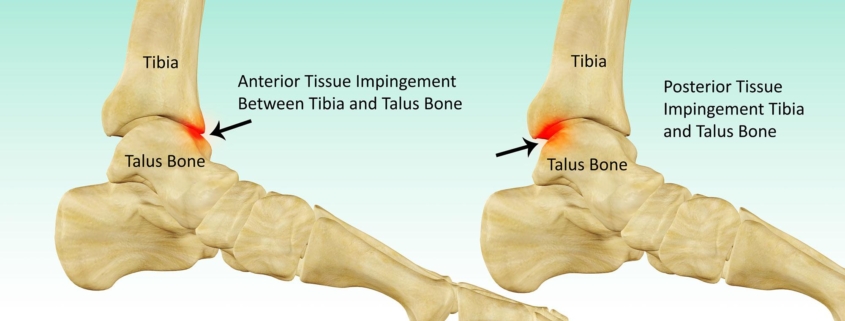
Ankle Impingement
Overview
Ankle impingement, also known as footballer’s ankle or dancer’s ankle, is a painful condition that affects the foot’s mobility. It occurs when bones or tissues in the ankle become compressed, or ”impinged”. This condition can significantly impair walking and other physical activities including sports.
Types
Two primary types of ankle impingement exist, each named for the area of the ankle they affect:
1. Anterior Ankle Impingement: Also known as “footballer’s ankle”, anterior impingement affects the front of the ankle and results from bone spurs or swollen tissue pressing on the ankle’s bone.
2. Posterior Ankle Impingement: Also referred to as “dancer’s ankle”, this type of impingement affects the back of the ankle, often resulting from an abnormality in the bone or repeated strain from activities such as ballet.
Causes
Ankle impingement can be caused by several factors. These include:
- Frequent ankle sprains or injuries
– Overuse or intense strain from activities like running, jumping or ballet
– Osteoarthritis in the ankle
– Bone spurs or growths
Symptoms
Symptoms of ankle impingement may vary based on the type but can include:
– Persistent ankle pain, particularly when moving
– Swelling and redness in the ankle
– Limited range of motion
– Pain aggravation during specific activities
Diagnosis
Diagnosis of ankle impingement often involves a combination of physical examination, patient’s history evaluation, and imaging tests like X-rays, MRI, or CT Scans. These assessments collectively help to identify the location and cause of the impingement.
Treatment Options
The treatment plan of ankle impingement primarily depends on the severity of the condition and may include:
– Rest and avoidance of activities that cause pain
– Physical therapy and exercises to strengthen the ankle and improve flexibility
– Medication to reduce inflammation and manage pain
– Injections for temporary relief of pain and inflammation
– In severe cases, surgery may be required to treat the condition
Living with Ankle Impingement
Managing ankle impingement in daily life involves making some lifestyle changes such as:
– Wearing supportive footwear tailored for your activities
– Regularly icing the affected ankle to reduce inflammation
– Engaging in low-impact exercises to maintain strength and flexibility
– Using braces or other supportive devices
When to Seek Help
If you experience consistent, debilitating ankle pain, restricted mobility, or other symptoms that increase in intensity over time, you should seek medical help. Such symptoms may indicate a severe condition requiring professional treatment. Ignoring these signs can lead to a decline in your quality of life and may potentially cause a permanent disability. An earlier diagnosis can enhance your chances for effective treatment and quicker recovery.
